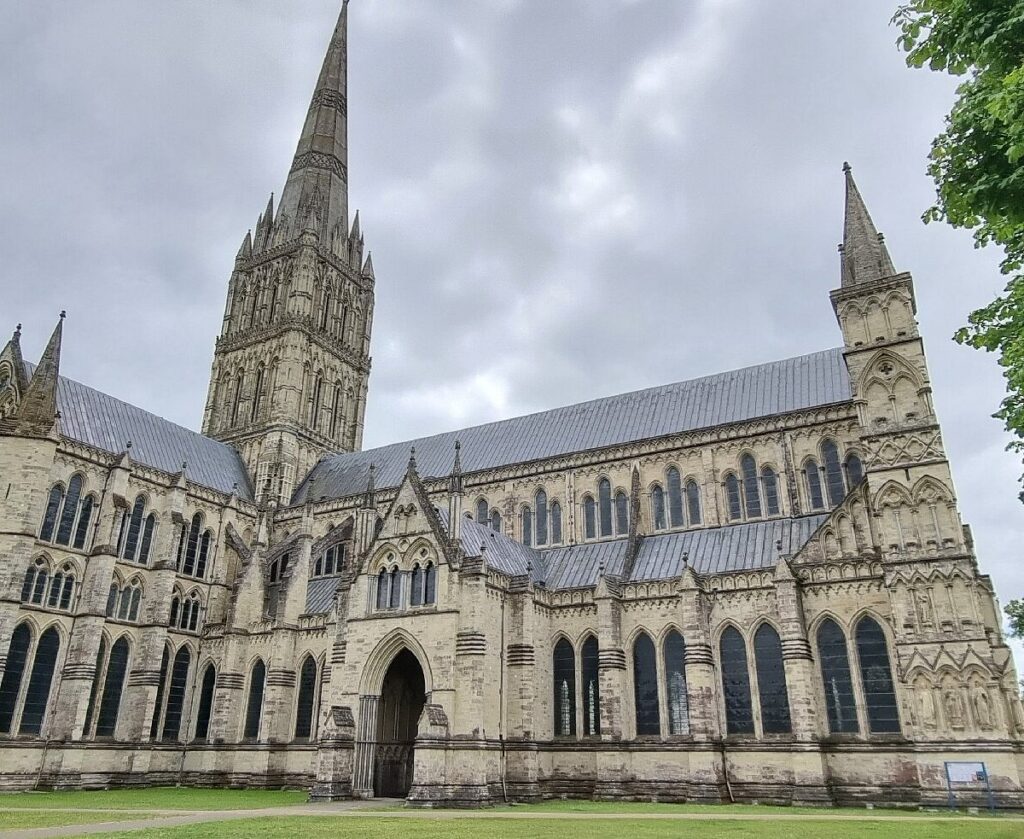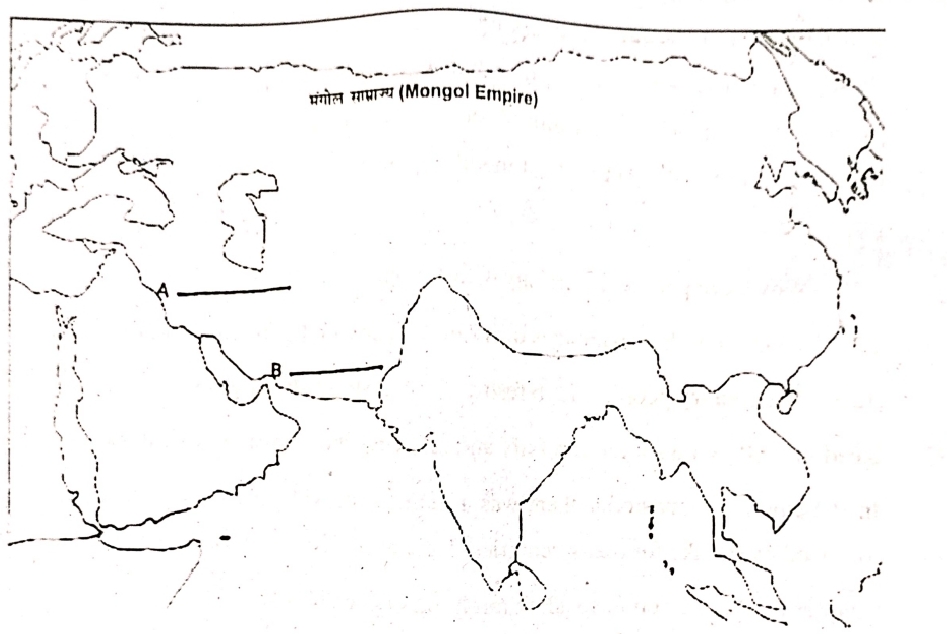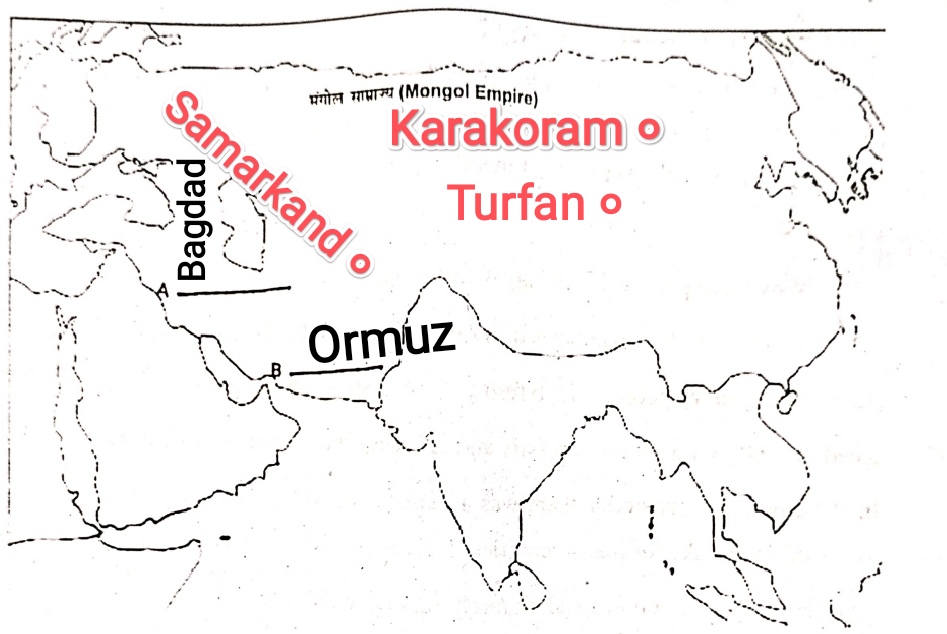Class 11 History Intermediate Exam 2025-26 Morning Shift
Section A (MCQs) → 1 mark each x 21
Section B (3 marks) → 3 x 6
Section C (8 marks) → 8 x 3
Section D (Source-Based) → (1 + 1 + 2 = 4) x 3
Section E (Map-Based) → Map marking, including two place names and three locations identified (1 x 2 + 1 x 3 = 5)
Section A: Objective Questions (1 mark each)
Q1. On what material was the cuneiform script written?
(A) Clothing
(B) Bike Plate
(C) Pieces of Dishes
(D) Clay Pictures
Answer: (D) Clay Rocks
Explanation: In Mesopotamia, cuneiform was written on clay rocks and then eaten.
Q2. What activities initiated the development of early cities?
(A) War and Hunting
(B) Agriculture and Trade
(C) Hunting and Grazing
(D) Games and Music
Answer: (B) Agriculture and Trade
Explanation: Agricultural products and trade promoted the development of permanent settlements and cities.
Q3. Which of the following statements is not correct?
(A) Enmerkar became the ruler of Uruk sometime after Gilgamesh.
(B) The Epic of Gilgamesh is written on 12 albums.
(C) The Mesopotamians were important figures in urban life.
(D) People from many communities and cultures lived together in the city.
Answer: (A) Enmerkar became the ruler of Uruk sometime after Gilgamesh.
Explanation: Enmerkar was the ruler before Gilgamesh, not after him.
Q4. Which river in Mesopotamia was famous for being the “World Route”?
(A) Tigris
(B) Euphrates
(C) Rhine
(D) Danube
Answer: (B) Euphrates
Explanation: The Euphrates was called the “World Highway” because trade routes ran along its banks.
Q5. Which community did the kings of Mari belong to?
(A) Amorite
(B) Akkadian
(C) Assyrian
(D) Armenian
Answer: (A) Amorite
Explanation: The rulers of the city of Mari belonged to the Amorite community and played an important role in Mesopotamia.
Q6. Which of the following was not an urban center of the Roman Empire?
(A) Baghdad
(B) Antioch
(C) Carthage
(I) Alexandria
Answer: (A) Baghdad
Explanation: Baghdad developed later (during the Islamic period), not during the Roman period.
Q7. What was the status of slaves in the Roman Empire?
(A) They had the right to vote.
(B) They were salaried employees.
(C) They were the property of their master.
(D) They were members of the Senate.
Answer: (C) They were the property of their master.
Explanation: Slaves were completely under the master’s authority, and did not have independent rights.
Q8. Why is the Roman Empire called an empire fragmented across three continents?
(1) (A) It traded with Asia, Africa, and Europe.
(B) Its army conquered the world.
(C) Its culture had influence on three continents.
(D) Its lands were spread across Asia, Africa, and Europe.
Answer: (D) Its lands were spread across Asia, Africa, and Europe.
Explanation: The Roman Empire’s borders spanned three continents.
Q9. Who was included in the Roman Senate?
(A) Ordinary citizens
(B) Wealthy landowners and aristocrats
(C) Foreign ambassadors (D) Military generals
Answer: (B) Wealthy landowners and aristocrats
Explanation: The Senate consisted only of elite members from the upper class (patricians).
Q10. Which religion remained in use in the Roman Empire until the 1st century AD?
(A) Democratic elections (B) Democratic elections
(C) Use of the Latin language (D) Nomadic lifestyle
Answer: (C) Use of the Latin language
Explanation: Latin remained the language of administration and education throughout the empire.
Q11. Which religion was widely propagated in the final years of the Roman Empire?
(1) (A) Judaism
(B) Zoroastrianism
(C) Christianity
(D) Islam
Answer: (C) Christianity
Explanation: Constantine the Great promulgated Christianity in the fourth century AD.
Q12. When was Augustus declared the first emperor of Rome?
(A) 27 BC (B) 27 BC (C) 44 BC (D) 14 BC
Answer: (a) 27 BC
Explanation: Augustus was declared the first Roman emperor in 27 BC.
Q13. Match –
Column A_____________Column B
(a) Genghis Khan __1. Law collection of the Mongols
(b) Circuit route____2. Establishment of the Mongol Empire
(c) Karakoram______3. Trade and Cultural Contacts
(d) Yas_____________4. Capital of the Mongols
Options:
____1______2_______3_______4
(A) a______b______c_______d
(B)d______a_______b_______c
(C)c______b_______a________d
(D)d______a_______c________b
Answer: (B) A-2, B-3, C-4, D-1
____Column A___________Column B
(a) Genghis Khan___1.Establishment of the Mongol Empire
(b) Silk Road_______2.Trade and Cultural Contacts
(c) Karakoram_____3.Capital of the Mongols
(d) Yasa__________4.Law Collection of the Mongols
Explanation: Genghis Khan established the Mongol Empire; the Silk Route trade was famous; Karakorum was the capital; Yas was the law collection.
Q14.Two statements are given here. Answer according to the code given below.
Assertion (A) The Mongol Empire’s administrative system was complex and fragmented.
Reason (R): Nomadic rulers ruled from a permanent capital.
Options:
(A) (A) and (R) are true, and (R) is the correct explanation of (A).
(B) Both (A) and (R) are true, but (R) is not the correct explanation of (A).
(C) (A) is true, but (R) is true.
(D) (A) is true, but (R) is true.
Answer: (C) (A) is true, but (R) is true.
Explanation: The Mongols had a complex tax system, but they ruled from mobile camps, not from a fixed capital.
Q15. What were the main features of the Mongol Empire?
(A) Agriculture-based governance system
(B) Limited territory of the empire
(C) Vast empire and vast expansion
(D) Residential housing projects
Answer: (C) Vast empire and vast expansion
Explanation: The Mongol Empire was the world’s largest empire, extending across Asia and Europe.
Q16. What were the key characteristics of Genghis Khan?
(A) Religious tolerance
(B) Business acumen
(C) Military organization and strategy
(D) Establishment of a permanent capital
Answer: (C) Military organization and strategy
Explanation: Genghis Khan’s success was based on his military instruction and exceptional combat skills.
Q17. What do the terms Catholic priests and knights refer to?
(A) Both preached religious sermons.
(B) Both were appointed by the Church.
(C) Both enjoyed special privileges in society.
(d) Both collected commercial taxes.
Answer: (C) Both enjoyed special rights in society.
Explanation: Both held high positions and titles in society.
Q18. Identify the picture –

(A) Nemur Castle
(B) Saulsbury Castle
(C) Heber Castle
(D) Benedict Ambe
Answer: (A) Nemur Castle
Explanation: This is a famous fortified structure of medieval Europe.
Q19. Who were the ‘serfs’?
(A) Independent traders
(B) Military leaders
(C) Religious teachers
(D) Land-owning farmers
Answer: (D) Land-owning farmers
Explanation: There were peasants on the coast who owned the land and worked under the feudal lord.
Q20. When was “The Cantabrian Tales” composed?
(A) 14th century
(B) 13th century
(C) 15th century
(D) 12th century
Answer: (A) 14th century
Explanation: Geoffrey Chaucer composed this work in the 14th century.
Q21. What does ‘guild’ mean?
(A) A class living in cities
(B) An institution that controlled the quality, price, and sale of products
(C) A festival of the solar calendar
(D) A place where monks lived
Answer: (B) An institution that controlled the quality, price, and sale of products.
Explanation: A guild was an association of businesses or artisans that monitored trade goods.
Section – B
(3 Mark questions)
Q.22. “Mesopotamia’s society and culture were a mixture of different groups.” Explain your reasoning.
Answer:
a) Mesopotamia was home to diverse communities, such as the Sumerians, Akkadians, Babylonians, and Assyrians.
b) These communities had different languages, customs, and religions, leading to a cultural mix.
c) Trade, warfare, and travel led to social and cultural differences among people.
Q.23. “The Roman Empire was a region of cultural diversity.” Analyze.
Answer:
० The Roman Empire spanned parts of Europe, Africa, and Asia, where diverse ethnic groups and languages coexisted.
० People of different religions, such as Christians, Jews, Greeks, and Egyptians, lived together.
० Despite administrative unity, local traditions were recognized, maintaining cultural diversity.
Q.24. Describe the innovations and changes made by Emperor Constantine.
Answer:
० Constantine legalized Christianity and made it the dominant religion of the empire.
० He moved the capital from Rome to Constantinople.
० He made governance more organized through administrative and military reforms.
Q.25. Describe the characteristics of Urban Centre Rome.
Answer:
Features of Urban Centres in Rome
- Planned Urban Layout – The streets in Roman cities were well-planned, broad, straight, and intersected at right angles.
- Public Amenities and Entertainment – Cities had public baths, aqueducts, fountains, theatres, and arenas that were an integral part of urban life.
- Commercial and Administrative Centres – Urban centres served as major hubs of trade, administration, and religious activities, such as Ostia and Rome.
In short:
Roman urban centres were symbols of the empire’s prosperity, advanced planning, and vibrant social and commercial life.
Q.26. Why was trade so important to the Mongols?
Answer:
०The Mongols were nomads, so they relied on trade for goods like grain, textiles, and metals.
०They connected Asia and Europe through the Silk Road.
०Trade gave the Mongol Empire economic power and political stability.
Q.27. Why was King Charles I hanged by the Parliament of England?
Answer:
० Charles I imposed taxes without Parliament’s consent and ruled autocratically.
० He crushed civil liberties and ignored Parliament’s rights.
० After his defeat in the Civil War, he was convicted of treason and executed in 1649.
Section – C
(Long Answer Questions – 8 marks)
Q.28. How can you say that “Ur lacked town planning”?
Answer:
a. Irregular Streets:
The streets of Ur were not straight and orderly, and in many places, the streets were narrow and twisting.
b. Uneven Residential Areas:
The size and location of houses were not uniform.
c. Mixture of Commercial and Residential Areas:
Markets and houses were built haphazardly near each other.
d. Disorganized Location of Public and Religious Buildings:
Temples and administrative buildings were located randomly among residential areas.
e. Lack of Drainage and Sewers:
There was no organized sewer or drainage system for rainwater and waste.
f. Disorganized Defense System:
The city walls were old and irregular, which did not ensure security.
g. Lack of Pre-Planning:
The city had no clear plan or zoning (residential, religious, and commercial areas were not distinct).
h. Mixture of Communities and Activities:
Various social and commercial activities were mixed together without any planning.
i. Lack of administrative control:
There is no clear indication of centralized administration or regulatory authority in the city were engraved.
Or
“How can you say that ‘Ur lacked town planning’?”
(8 points)
Answer (Pointwise):
- Irregular roads:
The streets of Ur were not straight and orderly; in many places, the streets were narrow and twisting.
- Uneven residential areas:
The size and location of houses were not uniform.
- Mixing of commercial and residential areas:
Markets and houses were built haphazardly near each other.
- Disorganized placement of public and religious buildings:
Temples and administrative buildings were located somewhere in the middle of residential areas.
- Lack of drainage and sewers:
There was no organized sewer or drainage system for rainwater and waste.
- Unorganized security system:
The city walls were old and irregular, which did not ensure security.
- Lack of prior planning:
The city had no clear plan or zoning (residential, religious, and commercial areas were not distinct).
- Mix of communities and activities:
Different social and commercial activities were mixed together without any planning.
- Lack of administrative control:
There is no clear indication of centralized administration or regulatory authority in the city.
Q.29. What was the Yasaq? How did it play a role in the establishment of the Mongol Empire?
Answer:
- Definition of the Yasaq:
The “Yassa” (or Yasaq) was a legal code created by Genghis Khan.
It laid down all the rules and regulations relating to Mongol society, the military, governance, and religious conduct.
- Purpose:
The main purpose of the Yasaq was to bind the Mongol tribes to uniform rules and maintain the unity of the empire through the legal system.
- Time of Creation:
This code was created in the early 13th century (around 1206 AD),
when Genghis Khan unified the Mongol tribes and declared himself “Great Khan.”
- Key Features of the Yasaq:
Military Discipline: Strict discipline in the army, severe punishment for disobedience.
Religious Tolerance: Equal respect for all religions.
Social rules: Strict punishment for theft, lying, and adultery.
Tax system: Equal tax collection from all tribes.
Judicial system: Justice was adjudicated according to the Khan’s orders and the Yas.
- Role in governance:
The Yas provided uniformity of law, bringing diverse tribes under a centralized administrative structure.
- Contribution to the unity of the empire:
This code instilled discipline, loyalty, and solidarity in Mongol society, making it easier for Genghis Khan to rule over vast territories.
- Effect on justice and administration:
The Yas’s rules ensured a fair justice system and created a fear of the law and stability within the state.
- Contribution to the establishment of the Mongol Empire:
The Yas established organization, order, and control among the Mongols, which formed the foundation of a vast and disciplined empire.
It provided the Mongols with a common identity and governance system.
Conclusion:
Yas was Genghis Khan’s policy that united the Mongol tribes under one law and one authority.
This uniformity became the key to the power and stability of the Mongol Empire.
Summary:
“Yas was Genghis Khan’s legal code, which played a decisive role in the establishment and expansion of the Mongol Empire through discipline, equality, and justice.”
Or – Who was Genghis Khan? What measures did he take to create a unified empire?
Answer:
Identity of Genghis Khan:
0 Genghis Khan (1162–1227 AD) was a great ruler and general of the Mongols.
0 His original name was Temujin.
0 He united the various Mongol tribes into a powerful empire.
- Reason for Unification:
0 Mongol tribes were previously isolated and fighting among themselves.
0 Genghis Khan considered unity essential to ensure collective security and power. - Measures and Policies:
0 Tribal Unification:
0 He created a structure by uniting smaller tribes and clans.
0 He ended individual wars and conflicts. - Discipline and Organization of the Military:
0 He organized the army based on strict discipline and strategy.
0 He clarified the duties of every soldier and officer. - Yassa Code of Law:
Genghis Khan implemented a legal code called the Yassa.
It covered military, administrative, criminal, and social regulations.
This established discipline and justice among the tribes.
- Religious Tolerance:
He gave equal respect to all religions.
This reduced conflict between different religious and cultural groups.
- Marriage and Diplomacy:
Forged political marriages and alliances with other tribes and powerful families.
This also helped stabilize the empire.
- Encouragement of Trade and Contact:
Secured trade routes (Silk Road).
Economic prosperity and cultural exchange strengthened the empire.
Results:
These measures transformed the Mongol tribes into a centralized and disciplined empire.
Genghis Khan’s empire became the world’s largest continuous land-based empire.
Summary:
0 Genghis Khan, originally named Temujin, was a great Mongol ruler who united the Mongol tribes through Yas law, discipline, religious tolerance, tribal unity, and diplomacy, establishing a vast and powerful empire.
Q.30. By the beginning of the fourteenth century, Europe’s economic development slowed—why did this happen?
Answer:
- Introduction:
Europe’s economic life was developing rapidly through the twelfth and thirteenth centuries—
cities expanded, trade routes developed, and agricultural production increased.
But by the beginning of the fourteenth century, several crises halted this progress.
- Population Growth and Pressure on Resources:
Continuous population growth increased pressure on land, food, and employment.
Cultivable land was limited, leading to a decline in production.
The burden of taxes and rents on farmers increased, worsening their situation.
- Climate Change:
Between approximately 1315 AD and 1322 AD, crops in Europe were destroyed due to continuous rain and cold.
This period is known as the “Great Famine.”
Severe food shortages and starvation reduced production.
- Famine and Malnutrition:
Frequent famines severely affected the rural population.
Diseases spread rapidly among the weakened and malnourished population.
This led to a shortage of labor and affected both agriculture and industry.
- Black Death – 1347 AD to 1350 AD:
The plague epidemic killed approximately one-third of Europe’s population (approximately 25 million people).
This reduced the number of the working class, bringing production to a halt.
Wages increased as a result, but commercial and industrial activities came to a halt.
- Decline in Trade and Transportation:
Trade routes were disrupted due to epidemics and wars.
Crisis and insecurity increased in maritime and land trade.
Markets closed in many cities, and guilds weakened.
- The Hundred Years’ War (1337–1453):
The prolonged war between England and France destroyed both agricultural land and trade.
Heavy taxation and military conscription worsened the situation of the peasants.
- The Weakness of Feudalism and Social Discontent:
Increasing pressure on peasants led to revolts (Peasant Revolts).
Dissatisfaction with the feudal system grew, and economic instability spread.
Destructive activities became more prevalent in society than productive ones.
Conclusion:
The fourteenth century was an “age of crisis” for Europe.
Climate change, famine, epidemics, war, and social unrest combined to halt economic progress.
This decline was only gradually reversed by the economic recovery of the Renaissance.
Summary:
By the beginning of the fourteenth century, Europe’s economic development slowed because—
(1) population growth and resource scarcity,
(2) climate change,
(3) famine and epidemics,
(4) war and social unrest combined to weaken the entire European economy.
OR – Describe the political changes that occurred in Europe from the fourteenth to the sixteenth century.
Answer:
Increase in the power of the monarchy:
During this period, the power of feudal lords and local lords in Europe declined, while the power of the king increased. Centralization of power began.
Rise of national states:
Countries like England, France, and Spain developed unified national states, where an entire region came under the rule of one king.
Establishment of standing armies:
Rulers now created permanent and trained armies, further strengthening their control and authority.
Centralization of the tax system:
Kings took control of tax collection. Taxes became the primary resource of royal power.
Declination of the feudal system:
Repeated wars, epidemics, and population decline eroded the power of feudal lords. Peasants gained greater freedom.
Influence of cities and merchants:
The rise of cities and the strengthening of the merchant class provided economic support to kings, freeing them from dependence on feudal lords.
Decline in the Church’s Power:
The political influence of the Pope and the Church began to decline. The Reformation challenged the Church’s authority.
Development of the State and Nationalism:
Gradually, a sense of nationalism and national identity developed among the people, laying the foundation for modern nation-states.
Summary:
From the fourteenth to the sixteenth century, Europe witnessed changes such as the centralization of monarchy, the decline of the feudal system, the decline of the Church’s power, and the rise of national states, which laid the foundation for modern Europe.
Section – D
(Source-Based Questions)
(4 points each × 3 = 12 points)
Q.31. Read the given source carefully and answer the questions below:
Warka Top
This head of a woman was carved from white marble in Uruk around 3000 BC. Its eyes and eyebrows may have been inlaid with yellow lapis lazuli, white shell, and black tar, respectively. A recess on the head is likely intended for jewelry. This sculpture is a world-renowned example of art. It is praised for the delicate and beautiful contours of its face, chin, and cheeks. It was carved from a hard stone that must have been transported from a great distance.
31.1 In which part of Mesopotamia was the city of Uruk located? (1)
31.2 Why is this statue admired? (1)
31.3 What characteristic of urban life does this sculpture most clearly reflect? (2)
Answer: 31.1 The city of Uruk was located in southern Mesopotamia.
31.2 It is admired for its beautiful form, smooth marble, and intricate craftsmanship.
31.3 This sculpture reflects the art, aesthetics, and commercial prosperity of urban life.
Q32. Read the following passage carefully and answer the questions below.
Dr. Gall’s Dialogues with the Rural Areas of Roman Cities
Famines in many provinces, which had been raging for several years, made it clear to even the most ordinary person that people were suffering from malnutrition and disease. It was customary for city dwellers to store enough food for the entire next year in their granaries soon after the harvest. Even after the urban dwellers had taken away all the wheat, barley, beans, lentils, and a large portion of the pulses, many types of pulses remained for the farmers. After consuming whatever was left for the winter, rural people had to rely on unhealthy foods in the spring. They somehow survived by eating tree branches, bark, roots, bushes, inedible plants, and leaves.
“Galen on Good and Bad Diet”
32.1 What caused people to become ill in rural areas? (1)
32.2 What were the advantages of living in a city during the Roman Empire? (2)
32.3 What foods did rural people rely on after winter? (1)
Answer 32.1 People in rural areas were falling ill due to malnutrition and famine.
32.2 Those living in cities had the advantage of grain storage and security.
32.3 Villagers were forced to eat tree bark, roots, bushes, and leaves after winter.
Q.33 (Benedictine Monastery)
Read the given source carefully and answer the questions below:
Benedictine monasteries had a handwritten book for monks containing 73 chapters of rules. This book was followed by the monks for centuries. Some of the rules in this book are as follows:
Chapter 6: Monks are allowed to speak.
Chapter 7: Humility means obedience.
Chapter 33: No monk should possess personal property.
Chapter 47: Idleness is the enemy of the soul, so monks and nuns should engage in physical labor at specific times and recite sacred texts at specific hours.
Chapter 48: Monasteries should be built in such a way that all necessary items—water, mills, gardens, workshops—are within their boundaries.
33.1 What was the rule in Chapter 7? (1)
33.2 How should monasteries be built? In which chapter is this given? (1 + 1 – 2)
33.3 How many chapters were there in the book? (1)
Answer:
33.1 Chapter 7 stated that humility means obedience.
33.2 Monasteries should be built with all the necessary things (water, gardens, workshops) inside—this is given in Chapter 48.
33.3 There were a total of 73 chapters in this book.
Section – D (Map-Based Questions – 5 points)
Q.34
34.1 Identify the locations:
(i) Karakorum – Capital of the Mongol Empire (Central Mongolia).
(ii) Turkistan – Region of Central Asia (present-day Kazakhstan-Uzbekistan).
(iii) Samarkand – Major city located in Uzbekistan.

34.2 Identify locations A and B:
A – Baghdad (City of the Caliph of Allah)
B – Beijing (Khanbalik) – Capital of Kublai Khan.

Option for Visually Impaired Candidates (5 marks)
Questions for Visually Impaired Candidates Only are in place of Question No. 34 (5 marks)
Question:
1. Where is Humber Castle located? (1)
2. On the banks of which river was Genghis Khan born? (1)
3. What was Genghis Khan’s childhood name? (1)
4. Who became the ruler of the Mongols after Genghis Khan? (1)
5. Which first Mongol ruler converted to Islam? (1)
Answer:
1. Humber Castle is located in England.
2.Genghis Khan was born on the banks of the Onon River.
3.Genghis Khan’s childhood name was Temujin.
4.Ogedai Khan became the ruler after Genghis Khan.
5.Barak Khan was the first Mongol ruler to convert to Islam.








Class 11 history ka paper Mid -term hindi medium